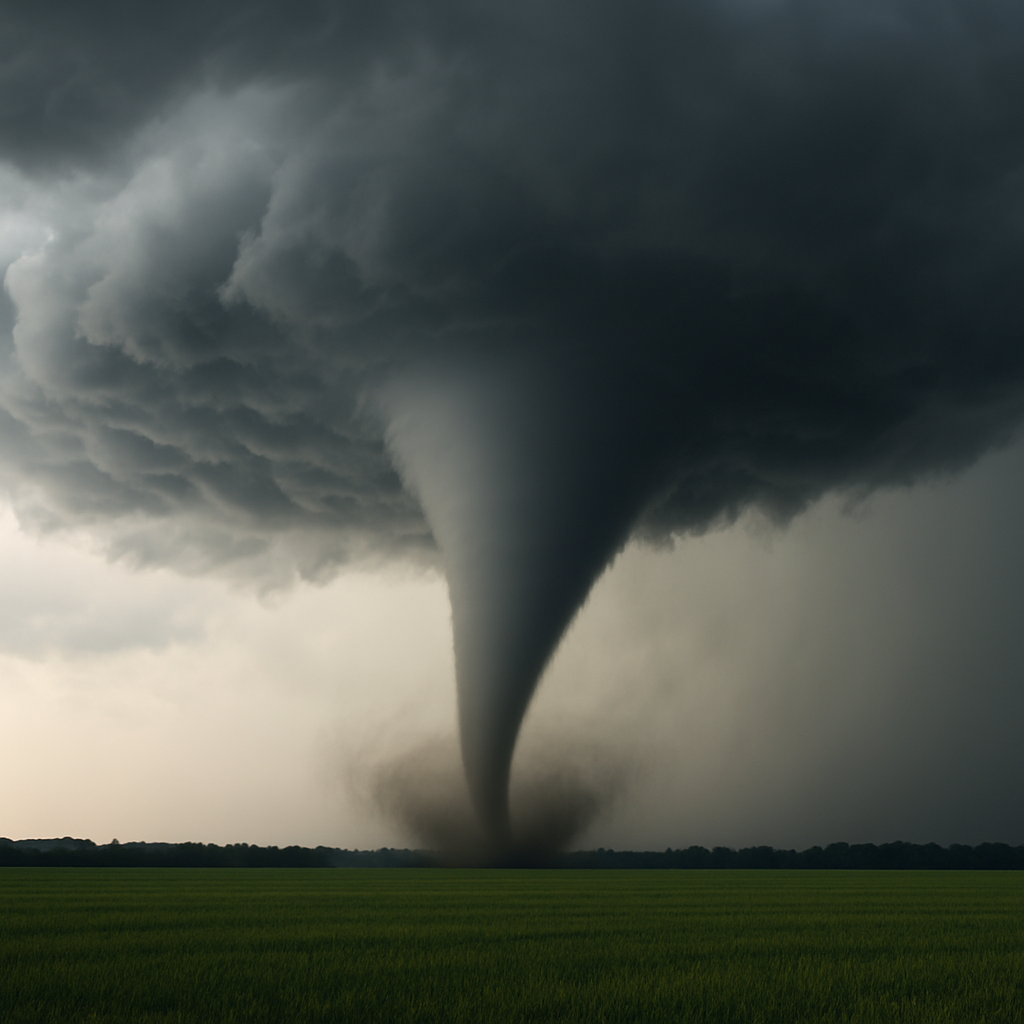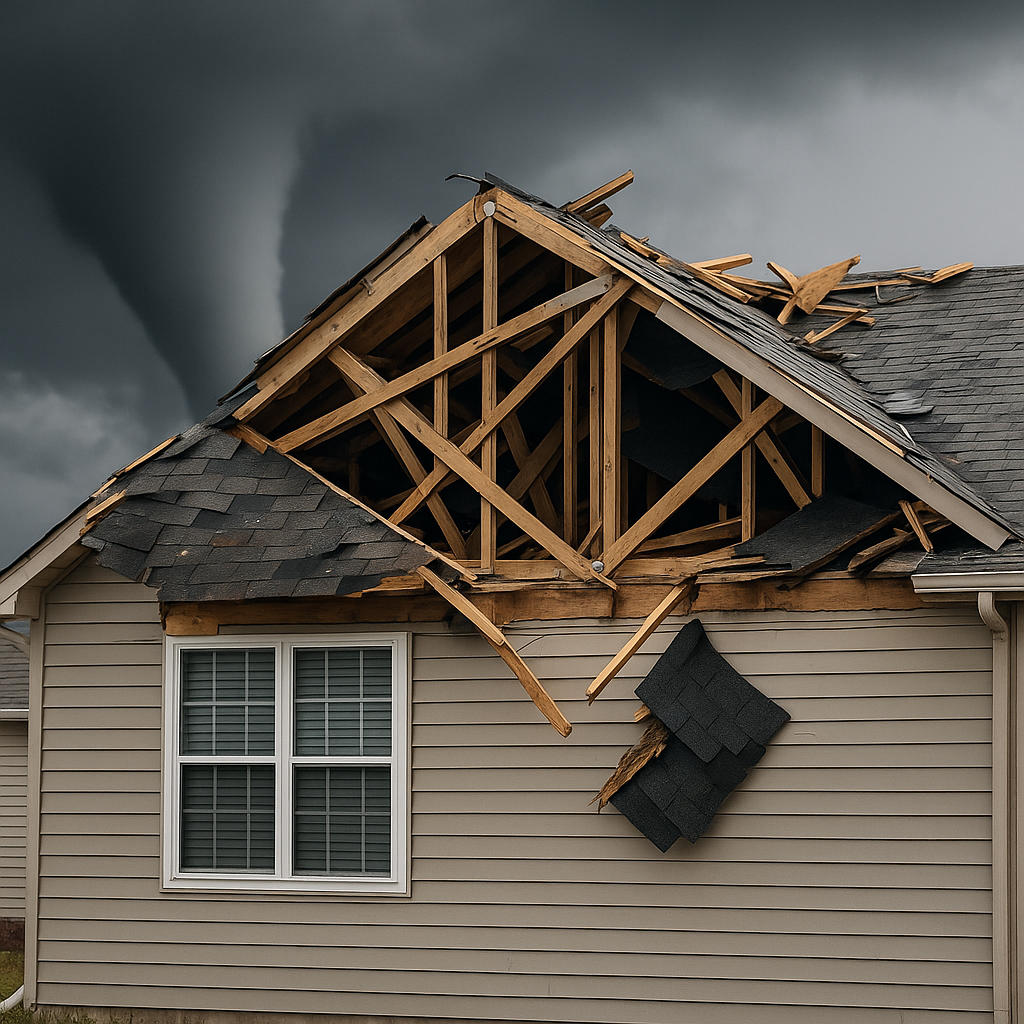Tornado season in North Carolina isn’t just a news headline, it’s a serious concern for homeowners throughout Fayetteville, Hope Mills, Spring Lake, and nearby areas. Recent tornado outbreaks in the Southeast have already caused extensive damage in 2025, and experts warn that storms are becoming more frequent and severe.
If you own a home in Cumberland County, now is the time to make sure your roof can withstand the next major weather event.


Why Tornadoes Are a Real Threat in North Carolina
North Carolina ranks among the top 20 states for tornado activity. While the Midwest is often considered “Tornado Alley,” the Southeast, including parts of central and eastern NC, has seen an uptick in powerful, fast-moving storm systems.
In fact, several counties near Fayetteville experienced EF-2 and EF-3 tornadoes in recent years, resulting in roof blow-offs, structural collapses, and widespread property damage.
What Tornado Winds Do to Your Roof
Tornadoes and severe storms create uplift pressure, pulling on shingles, flashing, and roof decking. Over time or during a single high-wind event, this can lead to:
- Missing or lifted shingles
- Compromised roof decking
- Water intrusion and ceiling leaks
- Soffit, fascia, and gutter damage
- Structural failure in older roofs
Even if a tornado doesn’t make direct contact with your property, straight-line winds from nearby cells can still cause significant damage.
How to Prepare Your Roof Before Severe Weather Hits
Preparation is key, and your roof should be your first line of defense. Here’s what you can do now to reduce the risk of costly repairs later:
1. Schedule a Roof Inspection
Have a local, licensed roofing contractor inspect your roof for loose shingles, lifted flashing, or signs of wear. Even small issues can become major problems during a storm.
2. Secure or Replace Vulnerable Materials
If your shingles are curling, missing, or improperly installed, they won’t hold up in high winds. A proactive repair or partial replacement can save you thousands.
3. Check Attic Ventilation & Framing
Proper ventilation helps equalize pressure during storms, while a strong framing system prevents uplift from damaging your structure.
4. Know What Your Insurance Covers
Homeowners insurance may cover storm-related roof damage, but not if the roof is deemed old or neglected. Documentation matters.
After a Storm: What to Do If Your Roof Is Damaged
If your home is hit by a tornado or strong winds:
- Stay safe and don’t climb on the roof
- Take photos of visible damage from the ground
- Cover interior leaks with tarps or containers
- Call a local contractor for a full inspection and damage report
- Contact your insurance company with documentation
Quick response is critical, moisture can enter your home within hours and cause mold or structural issues.
Need Help After a Storm?
At M&D Construction, we’ve helped hundreds of Fayetteville-area homeowners respond to severe weather with fast inspections, expert repairs, and full insurance claim support. Our team knows how to spot damage others miss, and we’re experienced in storm restoration from shingle repair to full roof replacement.
If your roof hasn’t been inspected in the last year, now is the time. We offer free inspections and can help you prepare your home for whatever this season brings.
